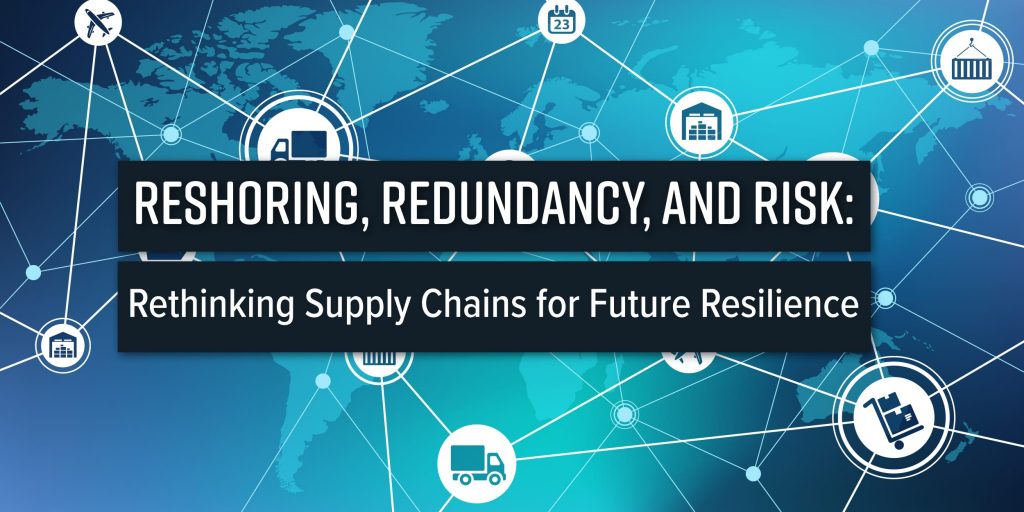Even before the COVID-19 pandemic, some U.S. companies were thinking about reshoring manufacturing because of uncertainty surrounding tariffs, concerns about quality, and a fuller sense of the cost of doing business overseas. By the time that a shortage of personal protective equipment (PPE) raised public awareness about the risks of offshoring, industrial buyers faced pressing challenges at home and abroad.
Shipments from Europe and Asia took longer to arrive or failed to leave foreign ports. Meanwhile, American manufacturers that were “non-essential” closed their doors, albeit temporarily. While many people worried about the availability of consumer goods, some supply chain managers at “essential” U.S. businesses wondered if they could buy what they needed anywhere.
Reshoring
Reshoring, the process of bringing home manufacturing that moved overseas, is usually billed as a way for companies to reduce their total product costs. That may seem counter-intuitive when U.S. labor rates are higher, but the Reshoring Initiative’s Total Cost of Ownership Estimator® shows that there are many other cost factors to consider. There are also supply chain risks from offshoring during COVID-19.
Yet, some trade experts doubt that reshoring – especially from China – will happen any time soon. As MIT professor Yossi Sheffi writes in the Harvard Business Review, “It will take decades and untold money to move out of China.” MIT’s David Simchi-Levi has a different perspective. “Companies will need to diversity inside China and outside China,” he says. “If you have most of your suppliers in Wuhan, then you had a problem.”
Resiliency
During the height of the pandemic, many organizations talked about “resiliency”, a term that in the material sciences refers to the ability of a substance to return to its original shape following deformation. In the business world, resiliency also describes the ability to “bounce back” from an applied stress, such as a disruptive pandemic like COVID-19.
As Paul Michelmen, author of The Resilient Enterprise, explains, companies can increase their resiliency through redundancy; however, that comes with a cost. Holding extra inventory can reduce the risk of stockouts, but it ties up cash. Manufacturers can add more suppliers but finding and vetting them isn’t free. Reducing capacity utilization doesn’t relieve a manufacturer of lease payments on equipment either.
Risk Mitigation
Ultimately, neither reshoring nor redundancy can eliminate risk. The best that supply chain managers can do is to develop an effective risk mitigation strategy. That’s easier than it sounds. If de-risking your supply chain was as simple as consolidating production in a single domestic location, the outbreak of COVID-19 at meat processing facilities wouldn’t have threatened to disrupt the food supply chain.
For manufacturers in the Empire State, New York MEP is ready to help. By working with your local Manufacturing Extension Partnership (MEP) center, you can identify the sources of risk and find solutions to supply chain problems. If you’re not familiar with your local center, help is just a click away. Request a consultation with FuzeHub and ask to speak to our manufacturing solutions experts.
Reshoring, Redundancy and Risk: Rethinking Supply Chains for Future Resilience
Page Views: 16

